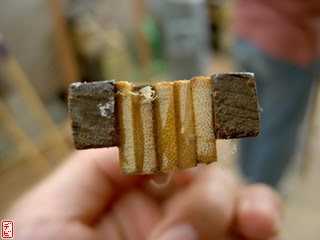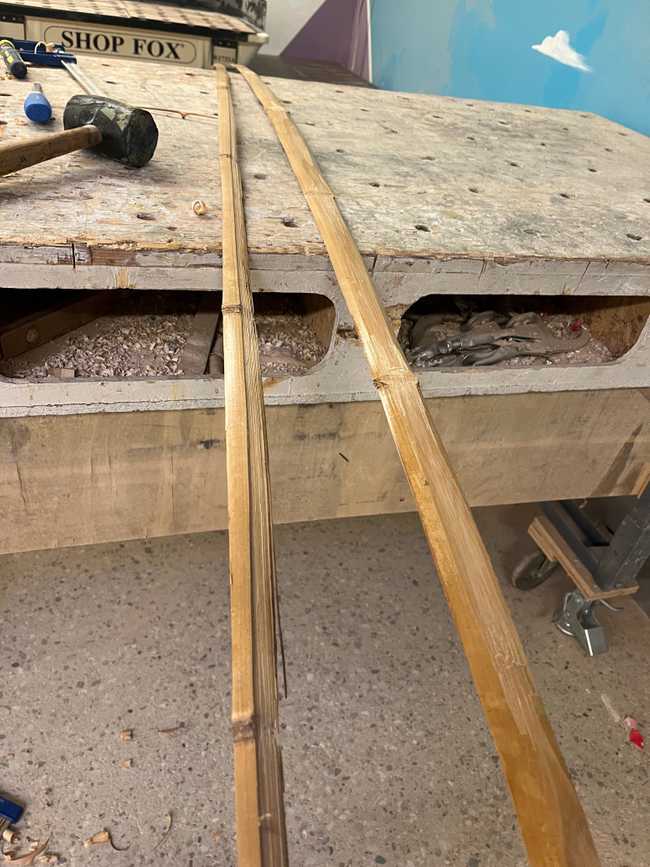Vertically Laminated Bow (Part 1)
Creating a vertically lamianted bow
3 min read
So, a few years ago, before the whole pandemic-y thing happened, I bought some moso bamboo from a place in Toronto, and some Madake bamboo from Jaap Koppedrayer, for the purpose of creating a bow.
Then the pandemic happened and I had to move so I no longer had space to build that bow. Of course, now it’s 2022, and I still dont’ have space to make a bow - but what I do have now is regular access to the local makerspace.
So in true me fashion, I’m going to pick up where I left off: Creating a vertically laminated bow, the way that the Japanese did (And the ancient chinese and south indians did).
So we’re going to make a core like this

This is a core made by one of the Shibatas (I don’t know which Shibata, just know that it was one of them), consistiting of 2 layers of hardwood on either side and 5 pieces of bamboo in between.
Note that in bamboo, the fibers that give the most “oomf” to the bow are the so-called power fibres, which lay juuuuust under the surface level of the bamboo. So planing the bamboo this way

Is actually a huge mistake. Note that because we’ve cut it that way, we’ve actaully sheared off most of the power fibres.
Lessons learnt: Cut the bamboo into smaller, thinner strips and then plane it so that they’re flat. That will give you more power fibres that way.
Note also: According to this paper,
Fig. 12b, the external bamboo layers are thicker (4-5
mm) with their thickness constant along the limbs and
since they are the furthest parts from the centroid of
the cross-section, contribute together more than 90%.
Contrary to what is traditionally believed in Japanese
bow manufacturing, according to these results the
main function of the core would be to add thickness for
increasing the inertia of the outer parts rather than
giving a direct contribution to the bow strength. The
function of higo, usually cut from the low-density
internal part of bamboo culm responsible for absorb-
ing compression, could be the damping of bow
vibrations.```
```Moreover, the bamboo layer used in the
belly is generally thicker than the one used in the back.```
i.e, the belly and the backing contribute the most to the draw strength of the bow, and as such, we should make the belly thicker than the backing.
export const _frontmatter = {"title":"Vertically Laminated Bow (Part 1)","date":"2022-05-21","description":"Creating a vertically lamianted bow","tags":["Archery","Bowyery","Bamboo"]}